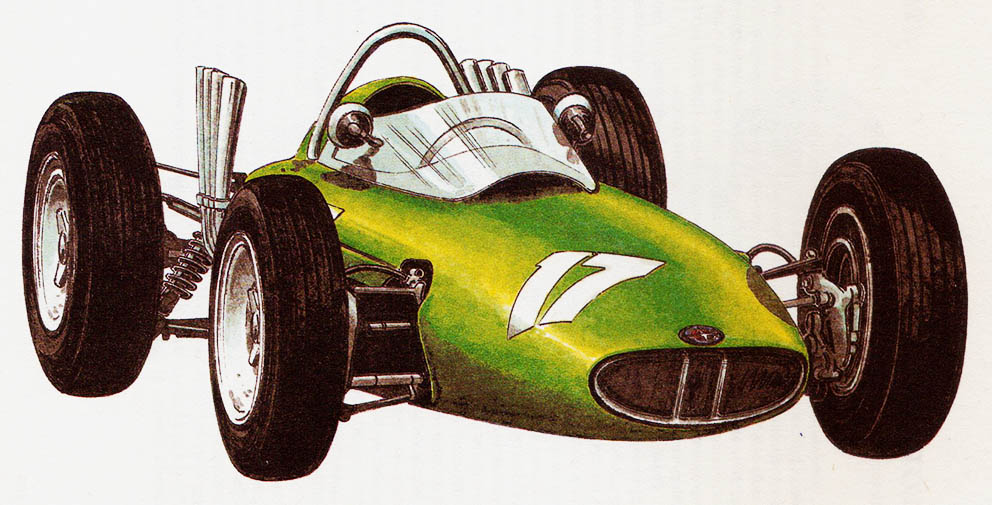BRM 56-V8 – year 1962
British Racing Motors, Lincolnshire, Bourne, United Kingdom.
Sir Owen's announcement that he would withdraw from racing in the event of a failure of his car also in 1962 year, it mobilized designers to design a new vehicle designated as BRM 56. The brand new model has a V-shape, eight-cylinder bore engine 68,5 mm and piston stroke 50,8 mm. Each cylinder had two valves arranged at an angle of 90 ° to each other. The engine had a capacity 1490 cm3 and at the compression ratio 10 : 1 was gaining power 133,2 kW (181 KM), and later even 150,9 kW (205 KM) by 11 000 RPM. The use of the Lucas injection system contributed to this. The same company also supplied transistor ignition. Valve timing 2 x OHC was driven by camshafts arranged in pairs in the cylinder heads. The shafts were seated in self-aligning roller bearings and rotated via a system of gears. Power was transferred via a dry disc clutch to a Valeria Colotti six-speed gearbox. The chassis was made of a tubular frame with wheels suspended independently on rocker arms in a trapezoidal system. Coil springs with concentric Armstrong shock absorbers were used. Fifteen-inch wheels are cast in light alloy. Dunlop disc brakes are used at the front and rear. The Tony Rudd's body was tall 700 mm. The empty car weighed 465 kg and reached speed 280 km/h.

This reliable British car brought the company a lot of success. Mostly the English rode it: Graham Hill and Tony Brooks, and American Richie Ginther. The best player was undoubtedly Graham Hill, winner of four Grand Prix races: in South Africa (155,5 km/h), w Zandvoort (153,5 km/h), FRG (129,1 km/h) and in Italy (198,9 km/h). He took second place twice (Belgium, USA). Thus, he won his first world title, and BRM won the manufacturers' world championship.
Sir Alfred Owen was pleased, and the British public has finally got their dependable racing car in a classic, dark green color.